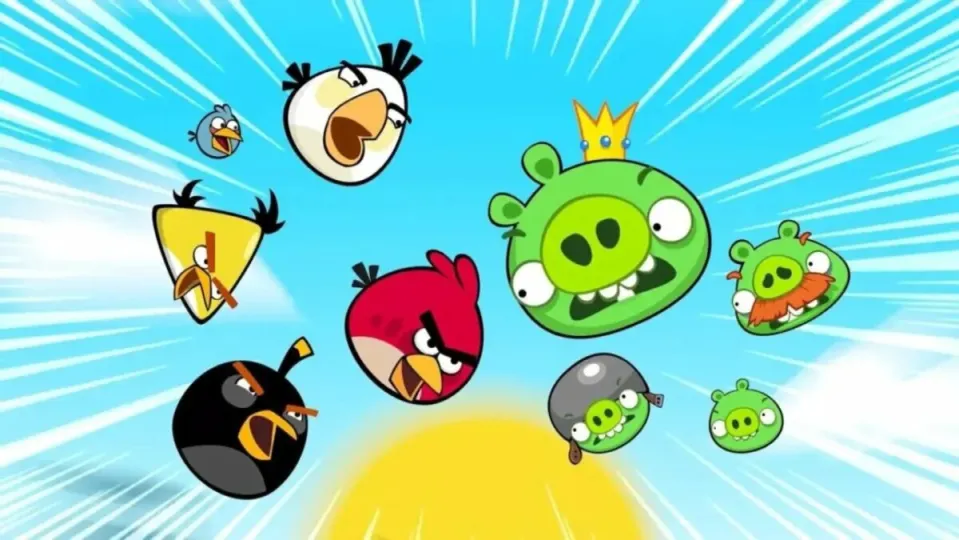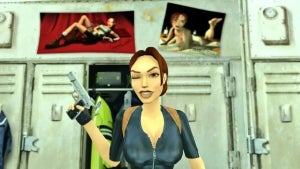If we make a list of the fifty most important video games in history, there would have to be Super Mario Bros or Call Of Duty, yes, but also Angry Birds, a mobile game that arrived three years before Candy Crush in a world where having the phone full of apps was still something grotesque and that turned a small studio in Finland into a money-making machine. But what happened to Rovio before and after Angry Birds?
Before the angry birds
Year 2003. Three technology students from the University of Helsinki participate in a mobile game development contest and manage to set up King of the Cabbage World, which would later be known as Mole War and helped them set up their own company, which they called, effectively, Relude. Or, as we all knew it after they changed the name to a better one, Rovio.

“Rovio” means “pyre” in Finnish, and that’s why its logo is a kind of flame that has not been extinguished for two decades now. And for six years they had to fight to stay in the market, either through mobile games based on licenses (Need for Speed: Carbon, X-Factor 2008) and other more or less original ones. The problem was that someone understood the potential of playing on a cell phone at a time when the word “app” meant nothing. To put it another way: what’s the point of making good games if there’s no one to play them?
And then, in 2007, the iPhone arrived and everything changed: mobile games were no longer difficult to access, the target was literally everyone, and Rovio saw their chance to, after 51 attempts, get a little piece of the market. They only had three rules for their last great game before bankruptcy, Square style: it didn’t need a tutorial, its loading times should be minimal and one minute of gameplay should be enough to have an optimal experience. Oh, and a flashy icon on the App Store wouldn’t hurt. Before losing everything, what’s the worst that could happen?

After several designs for a possible game, the management team was left with some angry birds that they found amusing. They found a reason for their anger (pigs had stolen their eggs) and spent 25,000 euros creating screens and their physics in their spare time. Six months later, Rovio had released four apps for other companies and had Angry Birds on the verge of success. And the proof that the game was addictive was that the mother of one of Rovio’s founders saw (well, smelled) her turkey burn on Thanksgiving because she was hooked on a trial version. All that was left to do was to throw it in a slingshot and see what happened. Success guaranteed… Or did it?
Angry birds
In December 2009, Rovio launched Angry Birds and it became, overnight… a bit of a flop. It didn’t take off in the United States or the United Kingdom, but it did in smaller markets. Little by little, between Finland, Greece, Sweden and Denmark, the game accumulated 40,000 downloads, enough to stay alive for a few more months. But in February 2010 everything changed. After Apple selected it as Game of the Week, it went from 600th to first place. And it would take quite a while to move from there.
At first, the business was clear: the game cost money on iOS and was fed by ads on Android, but it gradually fell into the game of microtransactions. For example, for 89 cents an eagle that appeared in one of the updates could solve a level in which you were stuck and move on to the next: more than two million people used it. There were screens to pass, of course: although the first installment had only one chapter of 21 levels, at the end of its life it had almost five hundred. Almost nothing.
And then came the madness: Rovio put aside the rest of its projects to focus exclusively on Angry Birds. First came Angry Birds Seasons, in 2010, which was updated at different key moments of the year (Halloween, Christmas, the first day of school). Then, Angry Birds Rio, a crossover with the movie, of course, Rio. From then on, the madness.

After the angry birds
Crossovers with Star Wars and Transformers, racing games (Angry Birds Go!), RPGs (Angry Birds Epic), pinball (Angry Birds Action), tile-matching (Angry Birds Match), virtual reality… The saga has expanded to 28 games, two movies, 9 TV series and countless books. They even have theme park attractions! However, for some time now, longtime fans are not happy with them… And rightly so. It all goes back to the first game, before microtransactions were our everyday life.
And the fact is that Angry Birds has been removed from the app stores because -seriously- it overshadowed Rovio’s novelties. Just as it sounds. On iOS, Rovio Classics: Angry Birds, which costs 0.99 euros, has changed its name to Red’s First Flight, and on Android it has disappeared altogether. In fact, we can find Angry Birds 2, Angry Birds Friends or Angry Birds Dream Blast, but no trace of the original.

Rovio has based its business model so much on micropayments that promise a falsely free game, that a game like the first Angry Birds, in which everything was paid from the beginning, could hurt them in the face of an audience that has lost, in a decade, quite a lot of interest in the franchise’s games. In addition, it cannot be said that what Rovio has done outside the saga has been successful: Selfie Slam, Retry (an attempt to capitalize on Flappy Bird) or Love Rocks Starring Shakira have not had enough pull to imagine a future for the company without slingshots, pigs and trying to milk the (red) golden bird.


